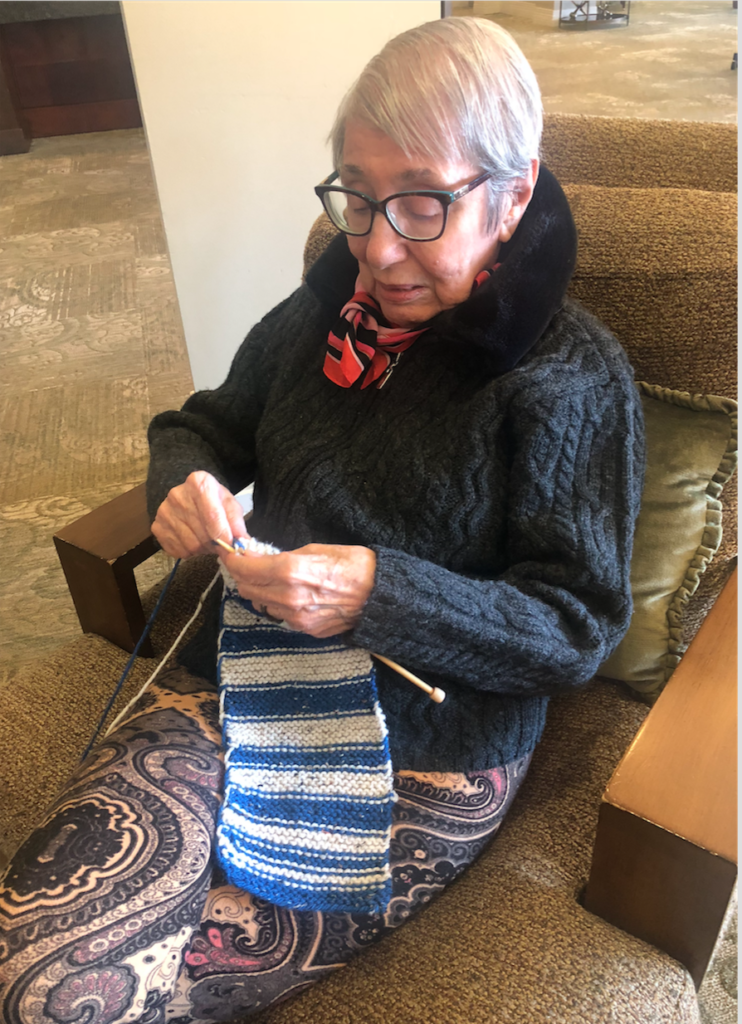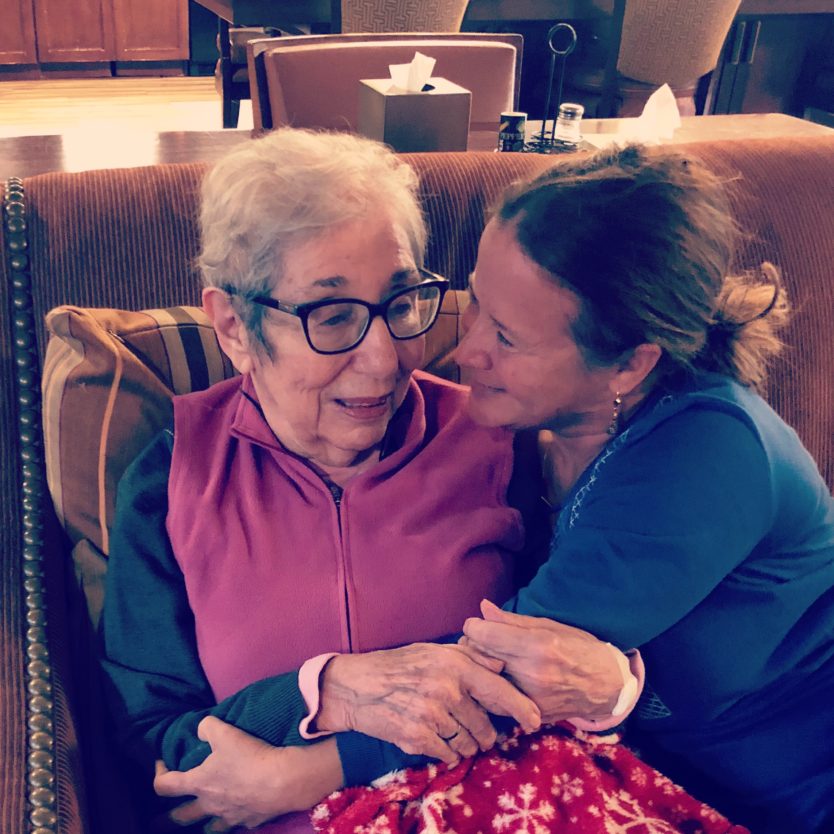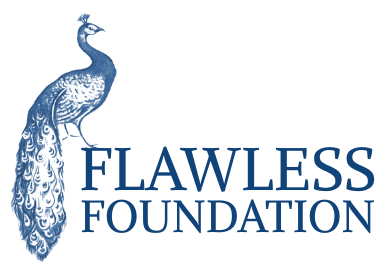By Janine Francolini, Flawless Founder
At the Flawless Foundation, our tagline is “Seeing the perfection in every person.” This means that we approach the world by looking through the lens of light and possibility with a focus on creating healthy environments for growth and optimal health to occur. What defines health often changes, depending on what phase of life a person is in, and sometimes, learning happens in a way that is more circular than an upwards curve: a young child struggles to remember how to tie her shoes; when she is eighty-five she might struggle to remember, again. And whether she is five or eighty-five, whether the memory is sustained for years or forgotten after a few minutes, both are achievements to celebrate. Personal development can be a process: to do more, learn more, be more. But there are also times when the path to optimal health is not so clear. In situations where we are not able to scaffold our own growth, it is important to have the support of others to help us live our fullest lives.
I was reminded of this on a recent visit with my mother, who has Alzheimer’s. This past year has been full of up and down patterns of progress in both directions. My Mom’s memory has declined but her activity level has increased as she is less tired and more cooperative. When I arrive I always joke that her bootcamp trainer has landed as I make it a priority to encourage her independence and integrate ways to engage my her mind, body, and spirit with love and rigor. This visit, a miracle occurred. When I arrived she had trouble remembering my name and by the time I left, she had come alive with days of incredible lucidity and the gift of quality time that I thought was only in my memory. The change I saw in my mother was astonishing, and it reminded me of the remarkable capabilities of our brains, and the impact that human connection and engagement can have on a person’s whole self. The brain is a muscle, and like any muscle, we need to use it.
Here are ten tips about brain health and wellness that I tried with my Mom:

Activity
My mother lives in an assisted living facility so Increasing stimulation and aiming to create a homelike environment is always a goal. Just like anyone, people with Alzheimer’s find purpose in activities that allow them to feel a sense of mastery so I avoid the impulse to do things for her. It sometimes takes five times longer to wait for my Mom to help herself through daily life activities like toileting or getting ready for bed but the wait is worth it as she can still remember how to do basic things (with prompting ) and feels so proud. I also always encourage her to complete simple tasks that mark her independence, like pressing the “Down” and “number” button on the elevator. I was amazed when she was having a really good day and read the New York Times as well as picked up knitting which she hasn’t done in years.
Connection
This is a big one. When older adults health starts to decline, we often focus on making sure that their basic needs are met. Remaining socially and emotionally connected to other people is just as vital to a person’s health as having physical needs met. I used my visit as an opportunity to help my mother connect with others in as many ways as possible. I helped her FaceTime, make calls, and write notes to people. Together we went downstairs to visit her friends who welcomed her with open arms and were thrilled to see her. The spark in my Mom’s eyes and how animated she was with them was such a joy to witness. On one occasion, she even went downstairs to watch a movie with them on her own!(which she hasn’t done in years)
We also had a great time going down memory lane, looking at old photos and letters together. She did this for hours with a flood of wonderful memories that we talked about. She shared stories with me and even some secrets I didn’t know about.
Nature
My mother doesn’t get outside much, and so I brought outside to her. I always make sure that the shades are up during the day and windows are open to let in fresh air. I also fill her apartment with flowers and always stop to take in the views at the windows. Spending time in nature has shown to improve anxiety, stress, executive functioning…the list goes on. We know that green spaces (or, at the very least, having the green brought into your space) also improves memory function. It makes sense that experiencing something beautiful and natural outside of ourselves helps us reconnect. Our brains are complicated little muscles, but I believe that experiences in nature reset something primal in our wiring that improves cognitive function across the board. It was also “a breath of fresh air” for my mother: by filling her home with reminders of the world outside her facility, I was reminding her of the world that exists outside of her apartment. Even the healthiest among us sometimes need that reminder.
Food is Medicine
My Mom was a gourmet cook and a health food enthusiast. She always cooked with fresh, whole foods. The Alzheimer’s Association reports a strong link between memory health and a healthy diet consisting of whole foods and plenty of fruits and vegetables. When I visit I bring her fresh foods and Green vegetable juice and her appetite increases and she eats better. AARP has also recently published a study linking consumption of excessive sugar and sugar substitutes to increased Alzheimer’s risk, and a nutrient-rich diet containing leafy greens to Alzheimer’s prevention. It is imperative to supplement institutional food with non processed, fresh foods as much as possible.
Exercise
My Mom doesn’t always appreciate the push to exercise but more times than not she feels better and appreciates her strength. By the end of this visit she was able to progress to getting herself up and off the couch without any help. She can still walk up and down stairs and we try and get this “stairmaster” activity in as much as possible. My Mom has always been active and in a routine around exercise classes and once she is over the hump of getting ready she does really well. Another tip is to make sure I go out of our way so she gets extra steps in. After seeming very low-energy when I arrived, my mother quickly proved to me that she still had a lot of stamina. I could see how much exercise was improving her mood and her vitality.
The connection between memory and exercise has been getting more and more attention in response to exciting new research. A break-through link between Alzheimer’s and exercise was recently published in The New York Times. The Nobel Prize-winning neurobiologist Eric Kandel and his colleague Gerard Karsenty have been studying exercise as memory loss prevention and Kandel recommends walking two or three miles a day.
Music
The activities director gave my mom headphones with an iPod that had her favorite songs on it. She seemed transported as she sang out loud with the headphones on to “Let it Be.” I also make sure her CDs are playing in her room. During a few sing alongs with the community, we sang and clapped together encouraging the patterns and repetition that are so important for brain health. Music has a singular ability to both soothe and engage people at the same time, and it does wonders for my mother.
Beauty
Beauty has always been a value in my mother’s life. She loves art and was a docent at the Guggenheim Museum. Like her mother, she has always been a fashionista. Helping her with her clothes, makeup and jewelry is something that is still a high priority to her.
Gratitude
Addie, one of my mom’s favorite care providers, was leaving, and I gave my mother a thank you card anticipating she would just write, “Love Kathy” All on her own, she was able to compose a beautiful thank you note to Addie, in her own words, and wrote it perfectly. Always a good writer, my mother took her time on the note, smiling to herself as she wrote. When she was done, she read it aloud to me with pride. It was a spectacular moment and Addie was deeply touched.
Flexibility
I had never imagined just how much I would draw on my experience in early childhood education in caring for my mother. I was filled with that same educator instinct, to push my mother to accomplish things she didn’t believe she could do—but that I knew she could do—and it was so gratifying to see how proud she was of her accomplishments. Through this process, I had to be persistent and not take no for an answer. I have found that No doesn’t always mean no. She may say No to eating something and then start eating that food a few seconds later.

I have found that it’s helpful not to take things personally if she becomes combative and to make sure to managing my own discomfort and negative feelings, because it can be tough. Some days my mother could go full out , and some days she had to rest, and I needed to be sensitive to both desires, along with every need in between. I was aware that I was pushing her hard, so being acutely in tune was the key to success. Sitting quietly and giving her a big hug or just holding hands went a long way when things were tough. But, by the end of my visit, my mother had become livelier, sharper, and so much more energetic and engaged with the world around her. In turn, I left Colorado with the fullest heart and the desire to get back as soon as possible to continue to share this treasured time with her.







